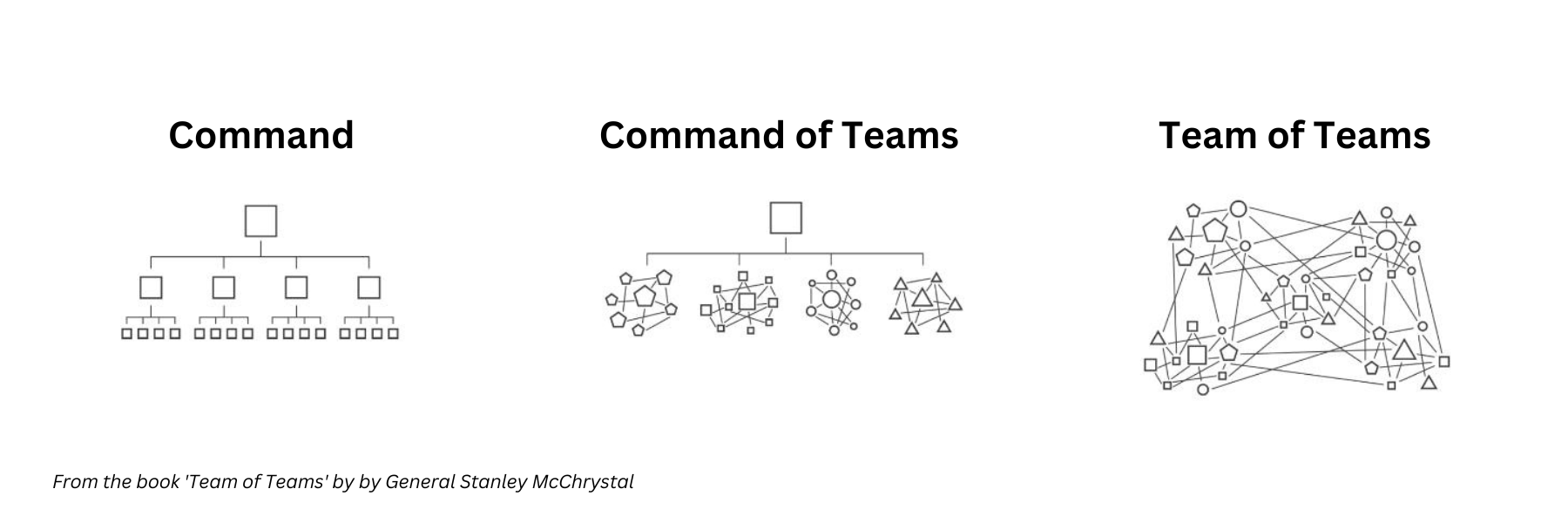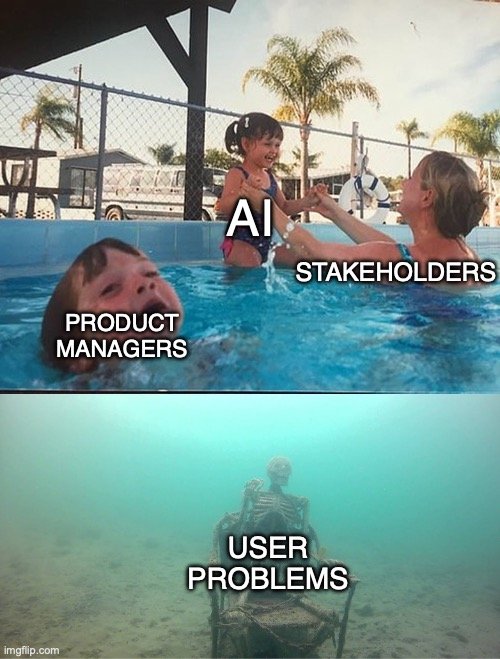6 Key Enablers for Agile from the Book "Team of Teams“
The first rule of scaling agile is DON’T.
Instead, descale the work and organisation instead.
But how? you ask.
Naysayers will shout, "You'll never get a large organisation to behave like a startup!"
One of the best books on building an agile organisation is not about agile at all. Instead, it’s a story about building an adaptive and responsive organisation. Free from jargon, buzzwords and trying to shove the latest ‘model’ or methodology down your throat.
I’m referring to the book ‘Team of Teams’ by no other than 4-star General and ex-commander of Joint Special Operations Command, Stanley McChrystal.
Many don’t associate the military with being very agile. They envision a highly hierarchal organisation where subordinates do as they’re told and the commanders call all the shots. And whilst some of that might be true, and it definitely was the case 100 years ago, the military has learned much over the thousands of years it’s operated, and nothing motivates change like than paying the ultimate price.
Gen. McChrystal takes you through his journey as Join Special Operations Commander to reinvent the United States special forces from a largely traditional command organisation into a highly resilient and adaptive organisation that can respond to the complexities of today’s world and the fog of war.
The profound thing was that in his post-military career, he found that the concepts he applied were not unique. Others had applied them as well to much success.
A ‘Team of Teams’
The underlying notion McCrystal applied is quite simple. But by no means did this make it easy to achieve.
The notion is to break the organisation down into a network of smaller components - into a team of teams.
Here are 6 key enablers from the book to achieve organisational agility:
🧠 Shared consciousness
Leaders must cultivate a shared consciousness across the organisation.
A shared consciousness is where employees have a shared understanding on the company, what others are doing and the organisational goals. Through a shared understanding employees can make smart decisions and remain aligned even when disparate.
McChrystal talks about the importance of having extreme transparency, sharing of information and a shared purpose to achieve this.
🎯 Empowered Execution
Once we have a shared consciousness, leaders must enable "empowered execution". But McChrystal warns, this must not happen before a shared conciousness is established. Without a shared consciousness, employees don’t have the information required to make effective decisions. Therefore jumping to 'empowered executation’ too quickly can be reackless and create a mirage of issues through poor decision quality but no fault of their own, teams simply wont have the information and understanding to make the right decision.
However once you have established a shared consciouness, empowered execution becomes a critical aspect to agility. Teams need to be empowered to make decisions and pivot where necessary, and to do so without needing to seek prior approval. This is the cornerstone to being able to move with speed and uiltimately be agile.
❔Problems, not solutions
Empowered execution can’t happen when teams are given solutions to deliver. The traditional way of managing is for management to identify the problems to solve, come up with solutions and direct the team on what to build. This may be great to control what the team is working on but it does little to enable adaptability.
Rather in a ‘Team of Teams’ construct, leaders must enable teams by giving them problems to solve, not solutions.
By giving problems over solutions you create flexibility for the team to adapt when necessary, quickly without seeking permission, whilst still maintaining alignment and ensuring that we’re achieving a common goal.
❤️ Trust
Trust is necessary for effective teamwork and empowerment.
Without trust, teams are just a collection of individuals. As McChrystal shares, trust is what binds us together.
As leaders, we need to deliberately invest time and effort into building trust between us and our teams and between team members - we play a large part in facilitating trust to happen.
💡Idea flow
Ask yourself, how long does it take for an idea to end up in the hands of your customers? How well do great ideas permeate up?
This is the notion of idea flow. Is it hard for great ideas to filter up to the top? Does it take long for your organisation to react and bring a new idea to the market? These two components are critical the organisational agility.
As McChrystal learned, adaptive organisations must have great idea flow. There needs to be easy for great ideas to filter up and spread through the organisation. A great example of this is Starbucks’ famous Frappuccino which originated from a 20-year-old barista in South Carolina. Today it is their most-sold proprietary beverage accounting for billions annually.
Equally, as an organisation, we need to be able to act on those new ideas quickly. Allowing ideas to flow up is one component; the next is being able to deliver on them and get them into your customer’s hands quickly.
🪴Leaders as gardeners
Finally, the last enabler for a Team of Teams construct is that leaders must be Gardners.
A highly adaptive organisation needs to shift the leadership model away from the one that controls and makes decisions to a leader who fosters an environment where teams can do their best work.
Leaders are, therefore more akin to gardeners, looking after the organisation and turning it into an environment where individuals, teams and ideas can excel.
Conclusion
Deconstructing your organisation chart into a buch of smaller ‘2-pizza’ teams is easy. The hard part is making that construct effective.
Most agile transformations I’ve witnessed underestimate the effort involved in enabling this.
Without a shared concisouness, teams can’t be empowered to make smart decisions.
Without problems to solve, teams are stuck delivering preconcieved solutions.
Without trust we will never be able to decentralize; and
Without leaders acting as garderners to cultivate and manage all this the whole construct will fail.
Further Reading: Get the book and/or watch the co-author Chris Fussell do a deep dive overview of the book in their weekly whiteboard series.







Your OKRs don’t live in a vacuum.
Yet this is exactly how I see many organizations treat their OKRs.
They jump on the bandwagon and create OKRs void of any context.
Here’s what I see all the time…